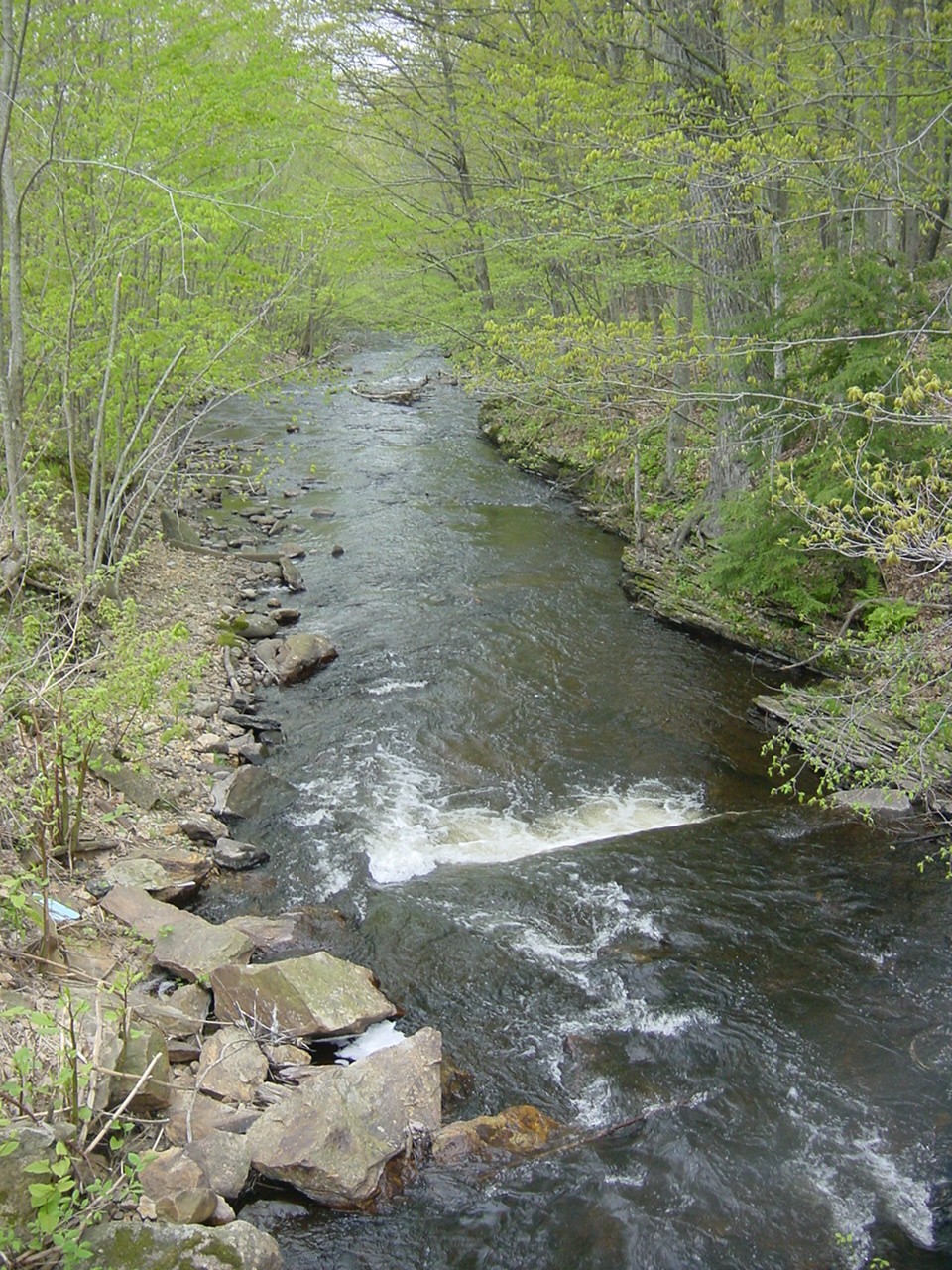Buffer Zones, Stream Corridors and Riparian Areas

Description
An undisturbed area or strip of natural vegetation or an established suitable planting that will provide a living filter to reduce soil erosion and runoff velocities.
Where Practice Applies
Natural buffer zones are used along streams and other bodies of water that need protection from erosion and sedimentation. Vegetative buffer zones can be used to protect natural swales and incorporated into natural landscaping of an area.
Advantages
Buffer zones provide critical habitat adjacent to streams and wetlands, as well as assist in controlling erosion, especially on unstable steep slopes. Buffers along streams and other water bodies also provide wildlife corridors, a protected area where wildlife can move from one place to another. Buffer zones act as a visibility and noise screen, and provide aesthetic benefits.
- Low maintenance requirements.
- Low cost when using existing vegetation.
Disadvantages/Problems
Extensive buffers will increase development costs.
Planning Considerations
- Preserving natural vegetation or plantings in clumps, blocks, or strips is generally the easiest and most successful method.
- Establishing new buffer strips requires establishment of a good dense turf, trees, and shrubs. Careful maintenance is important to ensure healthy vegetation. The need for routine maintenance (e.g. mowing, fertilizing, liming, irrigating, pruning, weed/pest control, etc.) will depend on the species of plants and trees involved, soil types, and climatic conditions.
- Leave all unstable steep slopes in natural vegetation.
- Fence or flag clearing limits and keep all equipment and construction debris out of the natural areas.
- Keep all excavations outside the dripline of trees and shrubs.
- Do not push debris or extra soil into the buffer zone area because it will cause damage from burying and smothering.
References
U. S. Environmental Protection Agency, Storm Water Management For Construction Activities, EPA-832-R- 92-005, Washington, DC, September, 1992.
Washington State Department of Ecology, Stormwater Management Manual for the Puget Sound Basin, Olympia, WA, February, 1992.
Massachusetts Depart of Environmental Protection. The Massachusetts Unpaved Roads BMP Manual. Berkshire County Regional Planning Commission. 2001